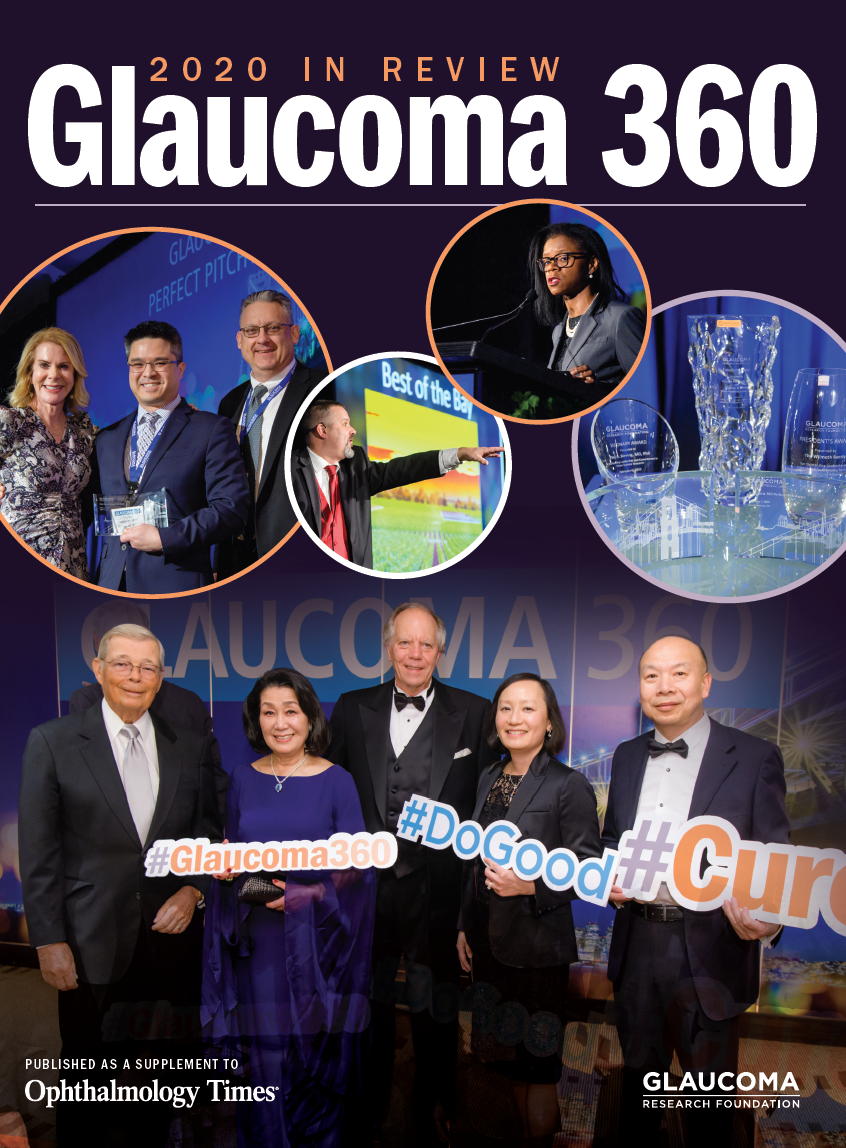- COVID-19
- Biosimilars
- Cataract Therapeutics
- DME
- Gene Therapy
- Workplace
- Ptosis
- Optic Relief
- Imaging
- Geographic Atrophy
- AMD
- Presbyopia
- Ocular Surface Disease
- Practice Management
- Pediatrics
- Surgery
- Therapeutics
- Optometry
- Retina
- Cataract
- Pharmacy
- IOL
- Dry Eye
- Understanding Antibiotic Resistance
- Refractive
- Cornea
- Glaucoma
- OCT
- Ocular Allergy
- Clinical Diagnosis
- Technology
Glaucoma devices: Now and in the future
Panel discusses IOP monitoring, drug delivery, data collection
Diagnostic and interventional technologies are improving continuously. Both ends of the spectrum are equally important for patients with glaucoma, with an eye toward individualized treatment, said Thomas Samuelson, MD, adjunct professor of ophthalmology, University of Minnesota, Minneapolis, and in private practice at Minnesota Eye Consultants, and Dale Heuer, MD, retired professor and chair of ophthalmology, Medical College of Wisconsin, Milwaukee.
They were co-moderators of a panel discussion comprising industry leaders.
Much of the discussion focused on intraocular pressure (IOP) monitoring, drug delivery technologies, and collection of glaucoma data. Here are some of the highlights.
Diagnostic approaches and data collection
One such advance that is creating excitement is in interventional glaucoma, which is “the marrying of IOP monitoring devices to drug delivery technologies,” said Ramin Valian, leader of an interventional glaucoma team, Allergan.
This approach will allow both identification of the patient and provide appropriate management of the patient with the right treatment option. “IOP monitoring is an evolving technology that can advance glaucoma management to the next frontier,” he said.
Jane Rady, MS, MBA, senior vice president of strategy and business development, Glaukos, is looking to futuristic monitoring in the form of goggle-based artificial intelligence (AI) systems for monitoring visual fields that has potential for use at home and in practice. This would provide visual data in a far more physician- and patient-friendly fashion, she said.
The downsides of this may be patient education to ensure correct use of the technology and cost, added Monika Fischer, MSc, senior Market manager for visual fields, Haag-Streit Diagnostics.
Another monitoring technology is fluorescence lifetime imaging (Heidelberg Engineering). Kfir Azoulay, MBA, head of strategy, Heidelberg Engineering, commented that this is an exciting innovation that allows measurement of the lifetime of fluorophores. This technology provides accurate and very early metabolic imaging at stages that are currently invisible to clinicians ophthalmoscopically or with existing technologies.
“With this technology, a molecular change translates to a new pattern that can be detected on the retina upon which AI can be applied,” he said.
He also looks to the contributions of faster optical coherence tomography (OCT) engines, acquisition, and higher resolution in glaucoma diagnosis.
Bringing monitoring technologies to nontraditional settings that are connected back to the physician lately has become more and more of a consideration. Angelo Rago, Global Ophthalmic Diagnostics, Carl Zeiss Meditec, believes that this will provide a more holistic view of how a patient is progressing in glaucoma management.
He also noted that on the surgical side preoperative and postoperative data can be used to ensure the best possible outcomes; for example, information garnered from placement of a toric intraocular lens using the Callisto system (Carl Zeiss Meditec) later could be extended to minimally invasive glaucoma surgeries.
Fischer also agrees with the usefulness of connecting the data. “We will see huge changes by having everything in one place in an easy-to-read read format,” she said. One step further would be the use of AI to flow that data in the right direction to better determine individual patient needs. AI, she noted, also can help in screening to identify potential patients with undiagnosed glaucoma.
In line with this, Azoulay noted that early accurate identification of patients who may be severely impacted by glaucoma for their lifetimes is inherently difficult to achieve because currently, no such technology exists. He echoed the sentiment that the true solution may be in the conglomeration of data from various devices and displaying the data intelligently to clinicians to facilitate individualized decision-making for patients along with the application of deep learning algorithms.
“Expecting one modality to do that now is not available in the foreseeable future,” he said.
Rago sees a possible home use in the future for OCT in predicting visual field progression in patients with mild-to-moderate glaucoma. “We may see monitoring devices using known technologies come to the home that were not thought of previously,” he commented.
Drug-delivery systems
The increasing availability of injectable drug delivery systems ultimately may replace drop therapy, but this would require adjustments in business models and patient perspectives to adopt such a different technology in a glaucoma practice, that is, intergrading injectable systems into practice may be more challenging that it appears, Valian added. In line with this, Samuelson pointed out, a trend that will be helpful to adoption of drug delivery systems is the benefit to the ocular surface, because there is less toxicity than with topical therapies.
Rady pointed to the potential safety durations of the various injectable delivery systems as key to their successful replacement of topical glaucoma treatment.
“The longer the safety duration of the therapy, the more likely is that a product will become a first-line therapy. The duration of activity and the clinical burden on practitioners may or may not be the same as seen in the retina community. Combination therapies also will come into play by providing convenience and efficacy for patients and physicians,” she commented.
Paul Halen, MS, head of Glaucoma and Retina, Alcon Vision LLC, also sees movement toward a great deal of investment in injectable delivery systems that will help deal with ocular surface and patient compliance issues.
“The introduction of combination therapies down the road makes sense,” he said.
Santen is looking toward a number of drug delivery options, noted Victor Chan, MS, MBA, head of US marketing and sales for surgical devices, Santen Inc. The company has prioritized the development of preservative-free drops to maintain the health of the ocular surface.

